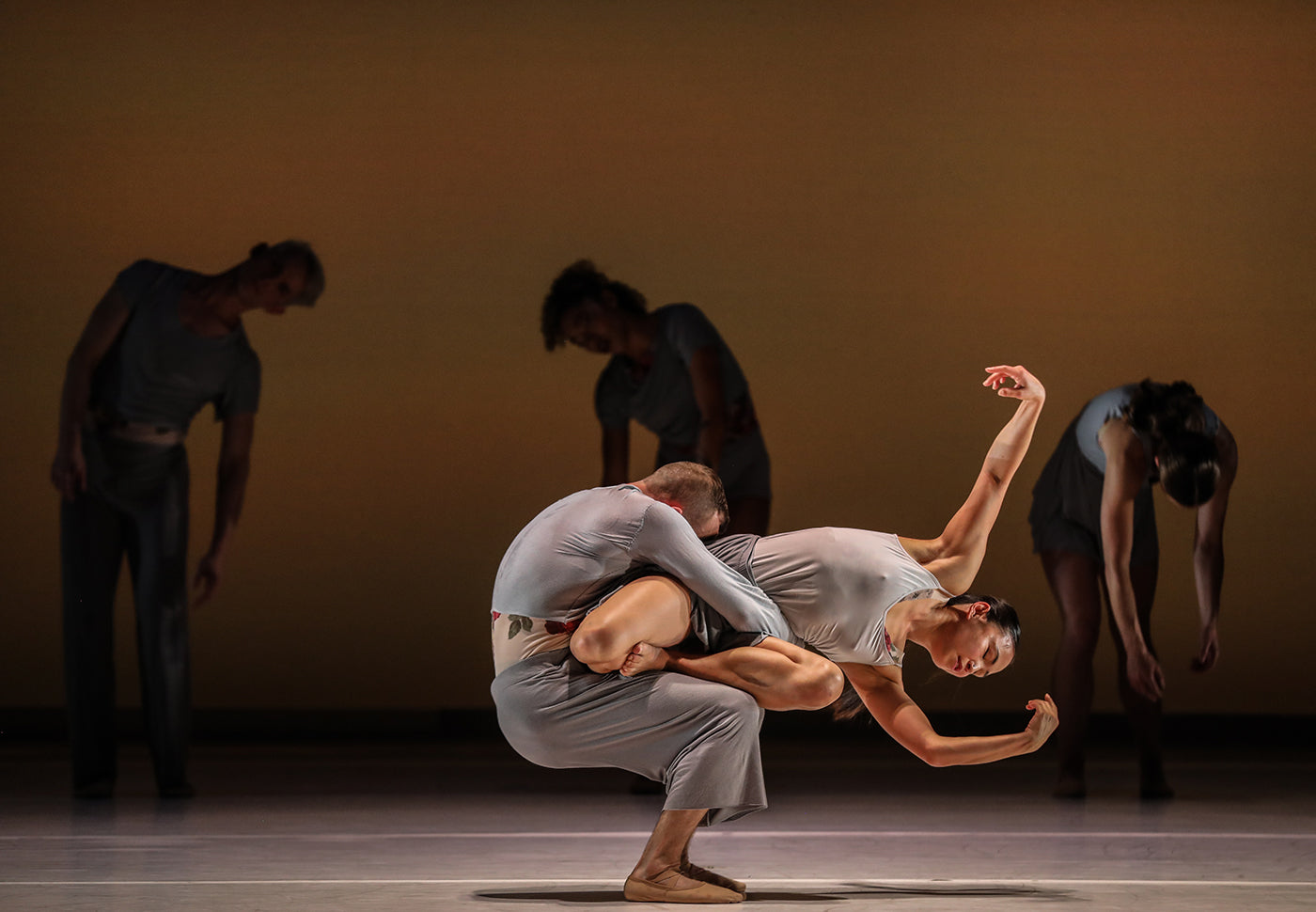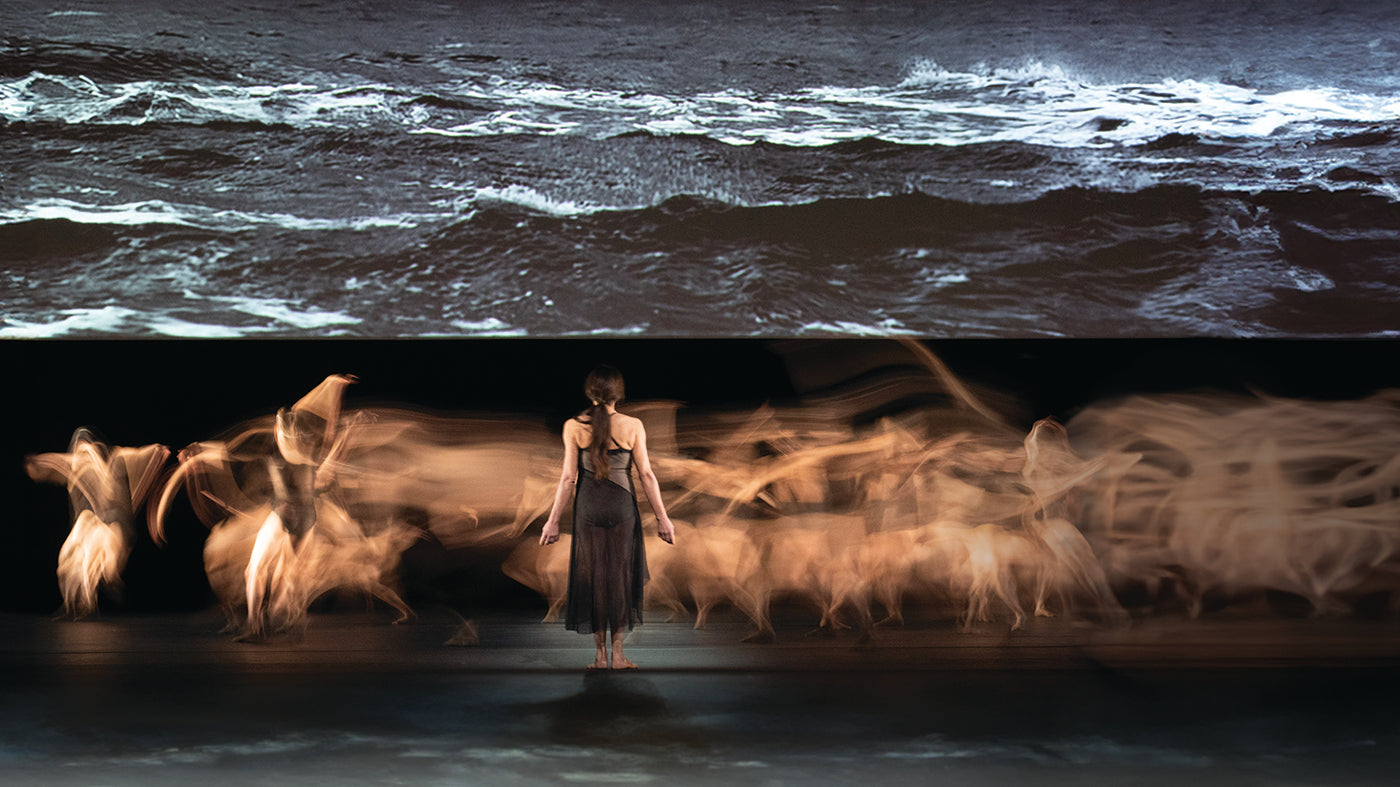It’s hard to get away from the chauvinism, even in the best-intentioned versions, like this comedy ballet from Jean-Christophe Maillot, choreographed for the Bolshoi Ballet in 2014. A romanticised sense of surrender still abounds (think fluttering limbs reminiscent of “The Dying Swan”), and there’s even a whiff of sexual violence, not least in the scene where Katharina is wrangled and disrobed by seven men. By and large, though, Maillot has done a decent job sidestepping the story’s more unsavoury aspects, playing up its farcical elements instead and, crucially, stripping the Petruchio/Katharina relationship of its master/subordinate dynamic—here they’re cast as equally obstinate firebrands so magnetised they can’t resist each other, despite their shared aversion to the conventional marriage racket. It helps that Katharina isn’t the only one asked to adjust her temperament to make the relationship work: just as she learns to tone down her fury, Petruchio too comes to moderate his arrogance.
This set-up could easily fall flat with the wrong pairing, but Ekaterina Krysanova and Vladislav Lantratov are as well matched as they are technically trained, which is to say impeccably. The latter’s Petruchio—lanky, conceited, sexily dishevelled – is a compelling complement to Krysanova’s brazen Katharina, who’s fierce from the get-go, barrelling on stage is a blaze of struts and greeting Petruchio’s every smirk with a sneer of her own. The pair’s first pas de deux—a fiery battle of one-upmanship following come cocky showboating from Petruchio—is electric; later duets, following their coupling, are equally heated, though far more velvety.
A handful of talented soloists complement the pair, including Olga Smirnova in a fetching turn as Katharina’s wide-eyed sister Bianca. The fast-rising star, the Bolshoi’s newest principal, bolsters pretty-as-a-picture flourishes—a popped foot during a kiss, a glowing gaze during an embrace—with strapping leaps and turns. Her character’s bouncy skirt and prim bun paint a picture of sugary agreeability—a distinctively non-threatening brand of sexuality when cast against her sister’s vampy emerald robe and wild red tresses. Anna Tikhomirova’s rousing performance as the family’s sassy housekeeper also deserves a mention—the role sees her trot on stage before the show to flirt with the audience and reappear throughout for cheeky vignettes, like an early scene in which she mocks the sisters with exaggerated impressions behind their backs.
This kind of clowning is on frequent display but steers surprisingly clear of cartoonish, thanks in large part to the proficient dancing that accompanies it. Maillot choreography puts the company’s world-renowned athleticism to the test, with exacting, powerful moves—breakneck spins, one-handed lifts—demanded at every turn, even in the miming sequences. The cast happily obliged, right down to the corps, who punched out six o’clock extensions and sky-high jumps with precision and bold expressiveness. And yet amid all the muscle, some soft, organic moments blossomed: undulating torsos from Bianca and Lucentio (lean, lustrous Semyon Chudin) during their wedding dance, pensive tilts of the head from Katharina amid her budding romance. The balance of sharp and smooth is warming, and brings depth to the characters’ respective conflicts.
The stylish set design—a smart black-and-white affair, accentuated with Art Deco touches and juicy pops of pastels—also helps the proceedings along, as does the sprightly score, a deft compilation of 25 Shostakovich extracts. And while there’s a temporary slack in tension in the second act, much of which is dedicated to the slow-burning build-up between Katharina and Petruchio, the ballet’s pacing is for the most part expedient. Together these make for an exceptional production, one shrewdly distanced from its problematic source material.









comments